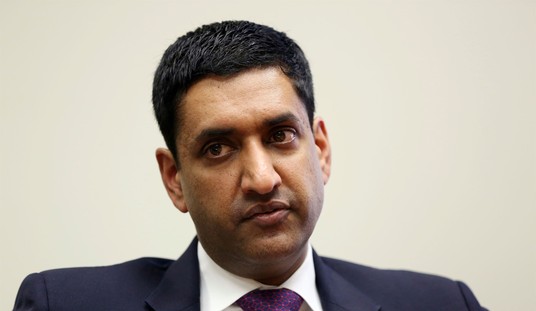The BEA released the third and final estimate of US economic growth in the third quarter, and it turned out better than either of the first two reports for Q3. Growth had been initially estimated at 2.0% in the October advance estimate and rose to 2.7% in November’s interim report, but the final number rose even further to 3.1%:
Real gross domestic product (GDP) increased 3.1 percent in the third quarter of 2012 after increasing 1.3 percent in the second quarter, according to estimates released by the Bureau of Economic Analysis. The third-quarter growth rate was revised up 0.4 percentage point from the second estimate released in November.
Don’t get too excited. Much of the increase came in inventory expansion and government spending, although consumer spending also picked up a little more than first thought:
Inventory investment was the main driver of the third-quarter acceleration in real economic growth. Nonfarm inventory investment turned up, more than offsetting a larger decline in farm inventory investment that stemmed from the summer drought in the Midwest.
In addition, consumer spending for durable goods picked up, as motor vehicles and parts turned up. Federal national defense spending rebounded, as did state and local government spending.
The real final sales of domestic product for Q3, which strips out inventory expansion, was a bit better than Q2 but not all that much better:
Real final sales of domestic product — GDP less change in private inventories — increased 2.4 percent in the third quarter, compared with an increase of 1.7 percent in the second.
In other words, we did see real improvement in economic growth over Q2, which the initial estimates understated. However, the increase from 1.3% rate in Q2 to a 3.1% rate in Q3 is a bit misleading, especially when considering the big increase in government spending over the previous quarter, as I pointed out a month ago:
Real federal government consumption expenditures and gross investment increased 9.5 percent in the third quarter, in contrast to a decrease of 0.2 percent in the second. National defense increased 12.9 percent, in contrast to a decrease of 0.2 percent. Nondefense increased 3.0 percent, in contrast to a decrease of 0.4 percent. Real state and local government consumption expenditures and gross investment increased 0.3 percent, in contrast to a decrease of 1.0 percent.
Even CNBC seems rather tempered in its assessment, although you have to travel rather far into the article to notice:
While growth in consumer spending, which accounts for about 70 percent of U.S. economic activity, was raised by 0.2 percentage point to a 1.6 percent rate, that mostly reflected higher health care costs.
Business inventories were trimmed to $60.3 billion from $61.3 billion. Restocking by businesses contributed 0.73 percentage point to GDP growth.
Given the sluggish spending pace, some of the inventory accumulation might have been unplanned, suggesting businesses will need to liquidate stocks this quarter because of weak demand.
Meanwhile, weekly jobless claims increased, but still remained in the same range as we’ve seen for the last 20 months:
A separate report showed weekly jobless claims rose slightly more than expected. Weekly jobless claims rose to 361,000 in the latest week. Claims has been expected to rise to 357,000, from 343,000 the prior week.
That could change, too, if this report on the Christmas retail season turns out to be accurate:
To be sure, stores have been offering discounts throughout the season, but they resisted the blockbuster deals that ate away at profits last year. In fact, promotions and discounting were down 5 percent through Dec. 10 compared with last year, according to BMO Capital Markets, which tracks promotions at about two-thirds of mall stores. But sales have been slow, and as of Monday, the level of discounting is now even with a year ago.
Now, stores will have to rely even more on the final days before Christmas to make up the sales shortfall. ShopperTrak, which counts foot traffic and its own proprietary sales numbers from 40,000 retail outlets across the country, said Wednesday that the number of shoppers in stores for the week that ended on Saturday fell 4.4 percent from the year-ago period, while sales declined 4.3 percent. As a result, the company said it would slash its sales forecast to a 2.5 percent increase to $257.7 billion, down from the 3.3 percent growth it had initially predicted.
And online sales, which have been seen as a beacon during the season, have been below expectations, too. Online sales are up 13 percent to $35 billion from Nov. 1 through Dec. 16, according to comScore, an online research. That pace is below the forecast of 17 percent for the season.
“It feels like the steam is out of the holiday since Black Friday,” said Bill Martin, ShopperTrak’s co-founder.
Rising inventories and falling sales do not make for a bright economic future.








Join the conversation as a VIP Member